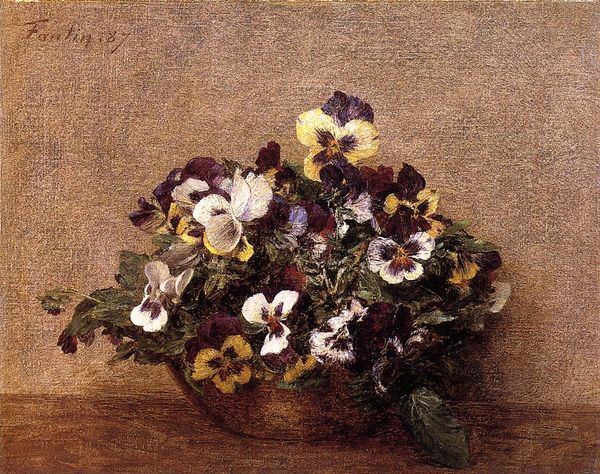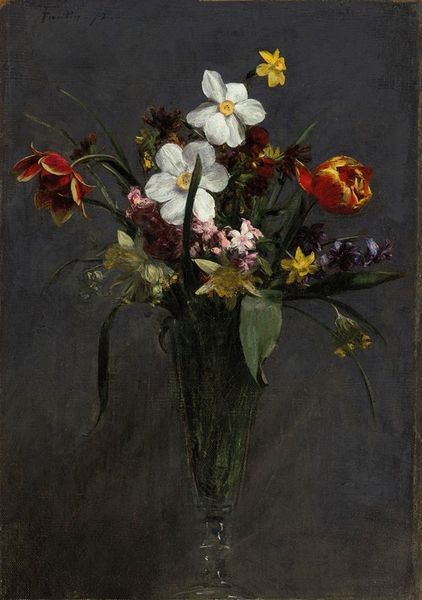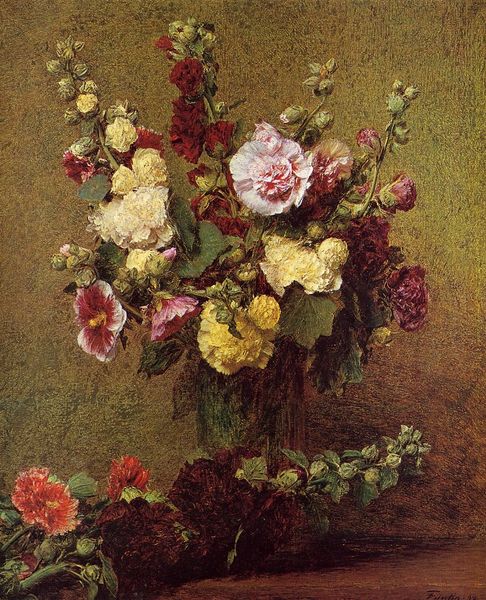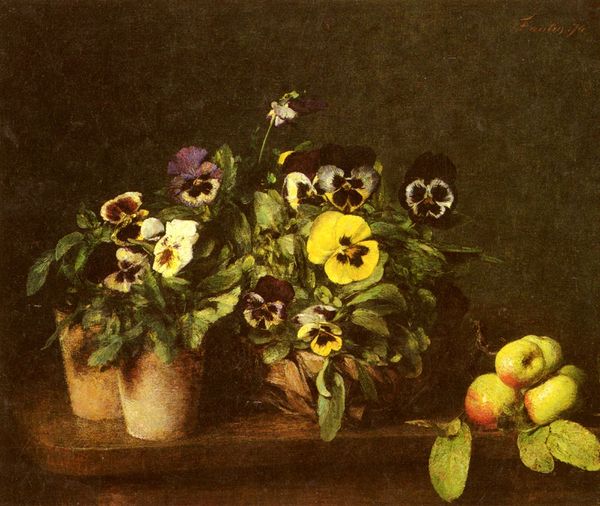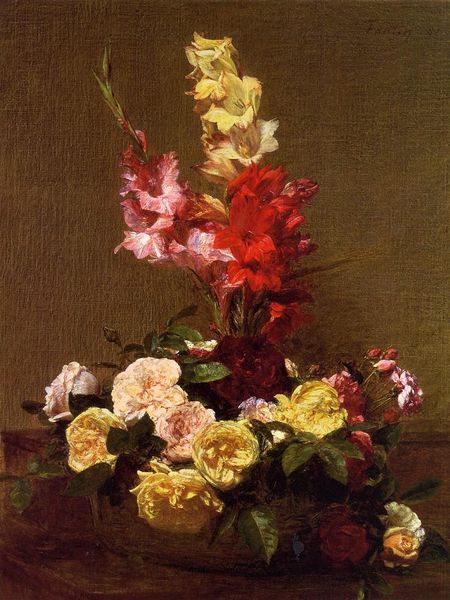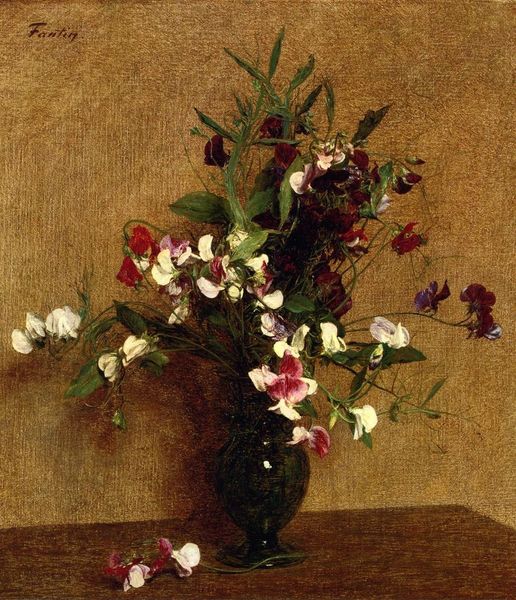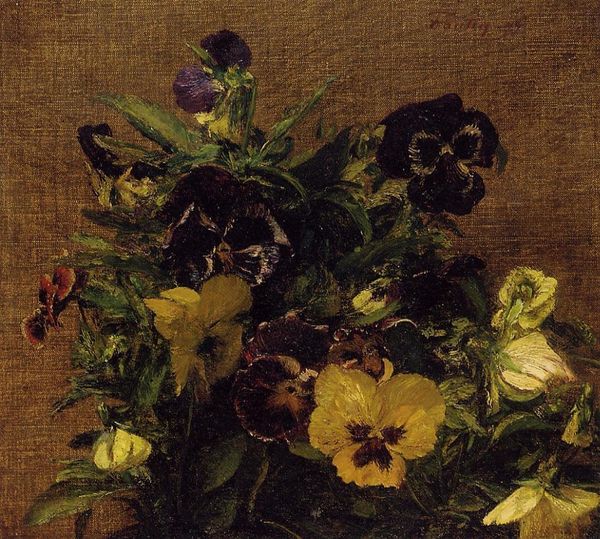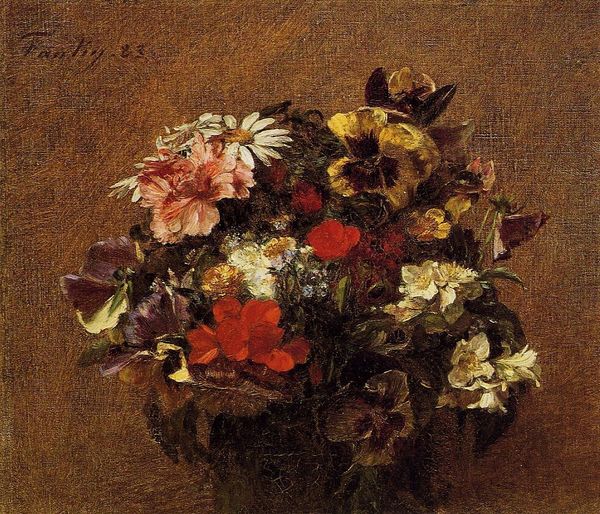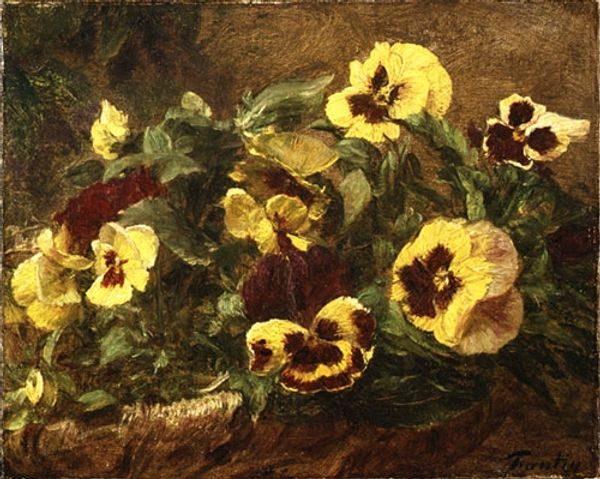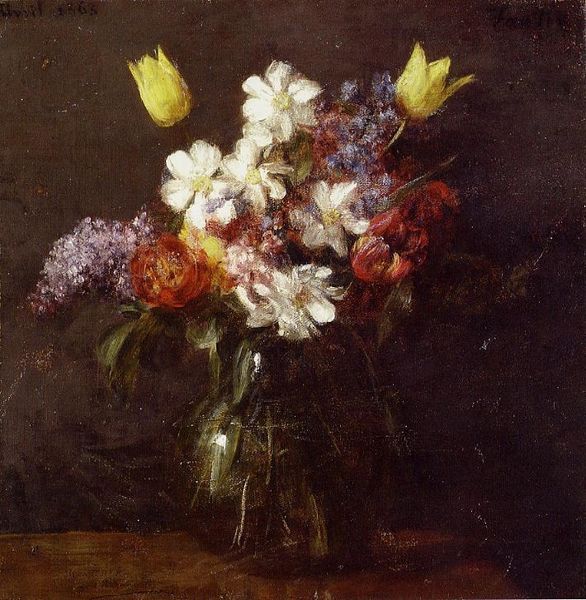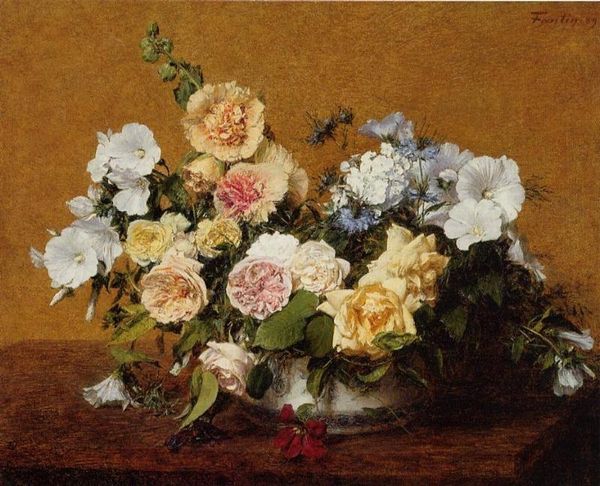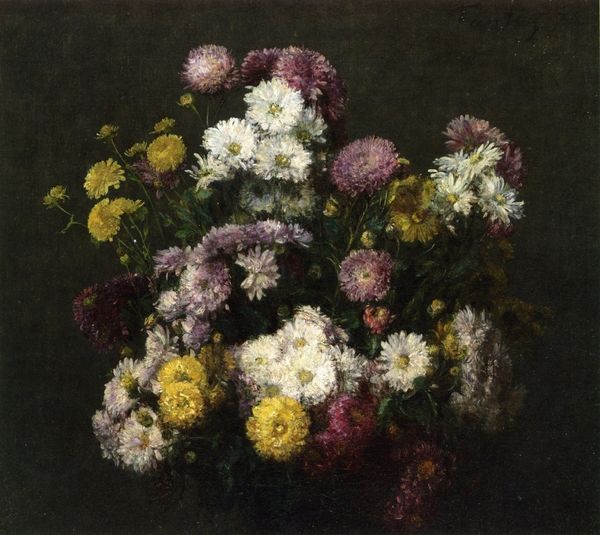
painting, oil-paint, photography
#
still-life
#
painting
#
impressionism
#
oil-paint
#
photography
#
oil painting
Copyright: Public domain
Curator: This painting of Pansies by Henri Fantin-Latour is really quite captivating. Editor: Indeed. Immediately, I’m drawn to the subtle contrast of the vibrant flowers against that earthy, umber backdrop. It evokes a sense of quiet introspection. Curator: Absolutely. Fantin-Latour had a specific vision; one could consider these pansies emblems of remembrance and sentimental reflection, recurring themes in Victorian painting, perhaps tied to photography and how flowers preserve the memory. Editor: So you see them as symbolic objects, then. I think the symbolism adds a fascinating layer when we think about the rise of the middle class in that era and how they engaged with the sentimental value associated with these floral arrangements. These domestic scenes were loaded with status anxiety and aspirations. Curator: Very well, pansies traditionally symbolize remembrance and love in many cultures. Fantin-Latour's art could also be speaking to the ephemerality of beauty itself, much like a Memento Mori, and I am really caught by the psychology. He also embraced photography to make art itself. It became a statement piece and a public show for people to enjoy. Editor: Interesting that you should consider it that way. The context surrounding it seems very vital. If you think of these bourgeois homes filling with consumer goods like art and decorative flowers, and you frame Fantin-Latour within the Salon system, the stakes rise in regard to production. The impressionistic quality subverts classical art at that time. It feels quite radical. Curator: A challenge to traditional norms! But still tethered to very deep emotional connections. It’s that play, that very special and complicated social dynamic, which keeps this artist endlessly intriguing. Editor: Indeed. Viewing it with fresh eyes has given me such interesting, new context to the symbolism and social dynamics on view here!
Comments
No comments
Be the first to comment and join the conversation on the ultimate creative platform.
